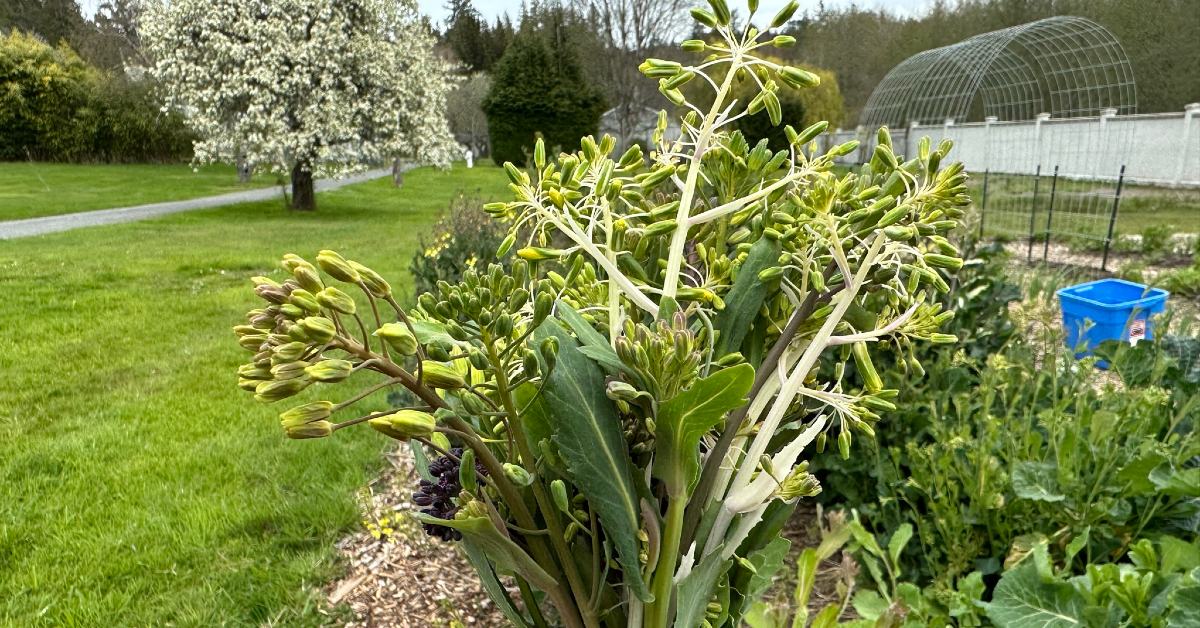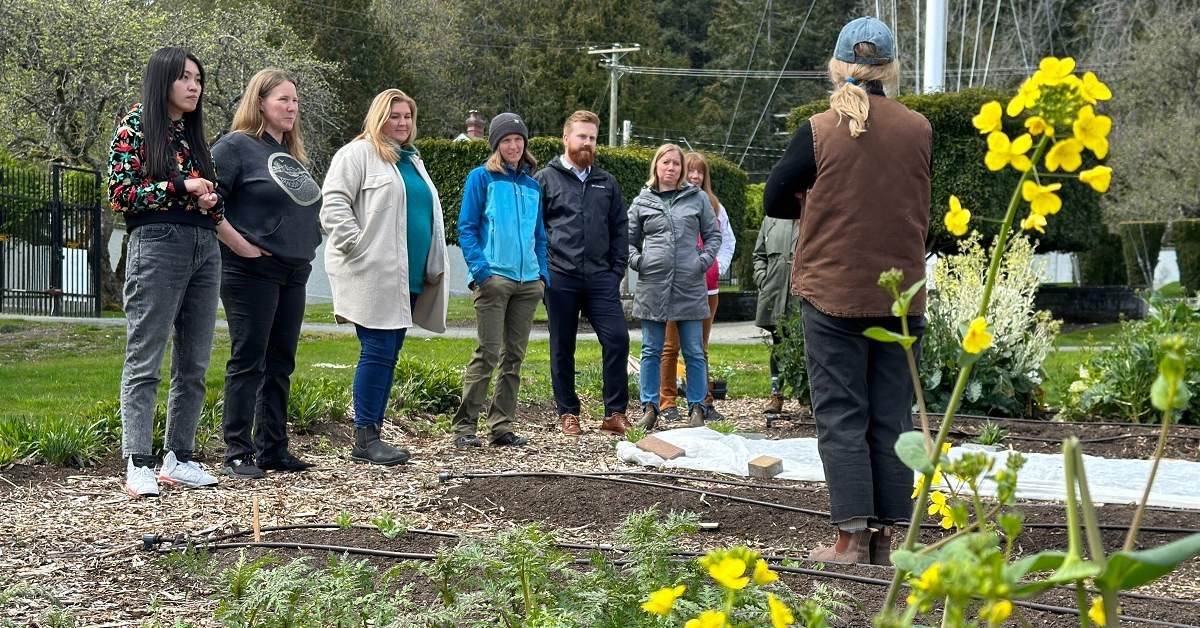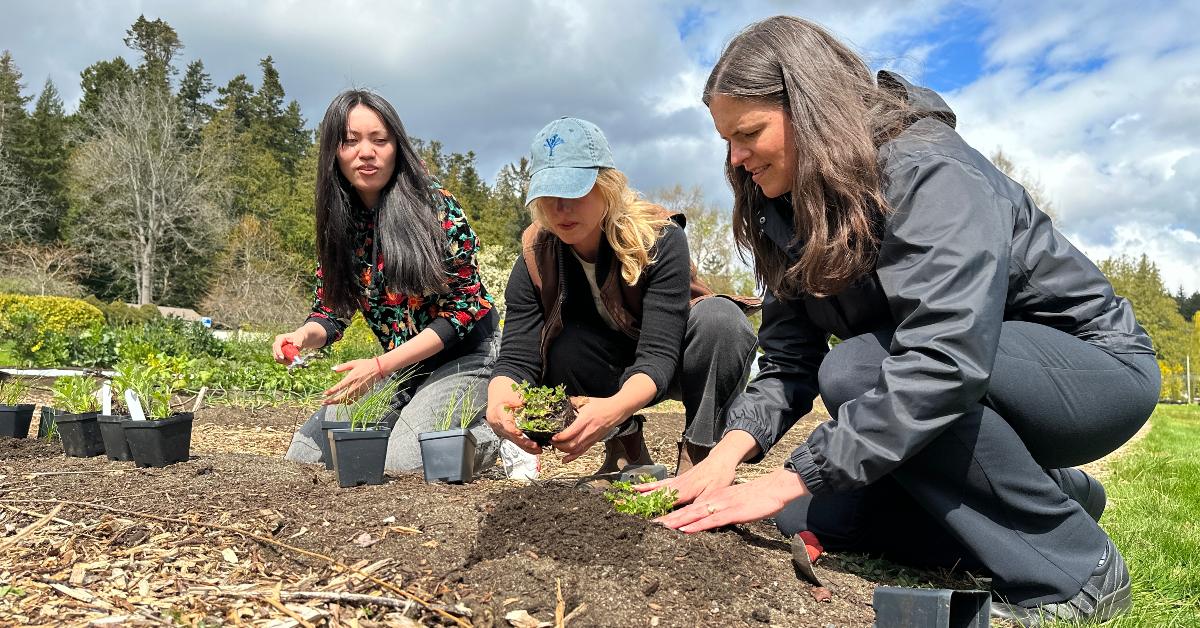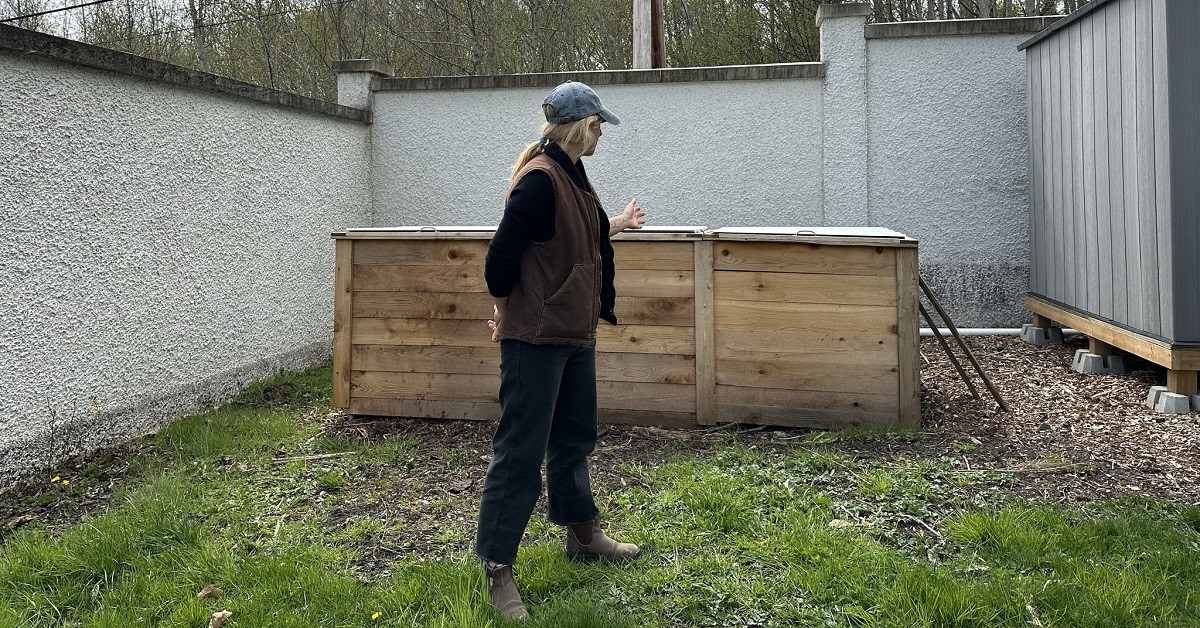From no-dig to pollinator plants, try this at home

Solara Goldwynn, Royal Roads University’s food systems manager, took staff on a tour of the Giving Garden as part of the university’s celebrations for Earth Week, hosted by the Climate and Sustainability team.
Goldwynn had these tips from the Giving Garden that will work for any home gardener as well.

Sweet greens year round
Kale and collard plants are their sweetest-tasting after a frost. Harvests from the large plants pictured fill food boxes, are donated to local partners, and most recently, were included in weekly deliveries to our on-campus community fridge for those in need to take home and enjoy.

Do you dig not digging?
The no-dig garden relies on permanent beds and wood mulch pathways to help with water management, compaction, and keeping crops happy and healthy. As the wood chips in the pathways break down into soil over the years, it can be added to garden beds. Wood chips help prevent weeds from growing in garden paths, and help keep gardening shoes mud-free by creating a soft, spongy path to walk on.

Use the chop and drop approach
Crop cover plants, like the ones pictured above, help to rejuvenate the soil over the winter while their blooms in the spring attract pollinators to the area. When it comes time to plant in your garden, you simply “chop and drop" the plant cuttings on the garden row so that the newly added plants can enjoy the nutrients as the plants return to the earth. Examples of great cover crop plants are annual clover, winter pea, fava beans, and phacelia.

Include pollinator plants in your garden
Planting a pollinator garden close to your veggie garden helps attract bees and other pollinators. The Giving Garden features mugwort, fireweed, goldenrod, shooting stars, douglas aster, nodding onion, which do double duty as sources for food and medicine in addition to attracting pollinators. Make sure to do your research to ensure you are selecting plants appropriate to your location, and only eat something if you know it’s edible.

Don't forget about compost!
The Giving Garden at RRU is beginning to use compost made from the garden waste , turning it into a rich soil booster for the next planting. If you’re keen to try at-home composting, be sure to turn the compost regularly and be patient. Goldwynn says after several months you’ll have a nutrient-rich material for your seeds to grow in.
New to gardening and not sure where to start?
Here are some great planting resources highlighted by Goldwynn:
• The free West Coast Seeds catalogue planting calendar available at most gardening stores.
• Food Plants of Coastal First Peoples by Nancy Turner.
• The Compost Education Centre many fact sheets on composting, food growing and more.
• For more information on no-dig gardening check out books, and youtube videos by Charles Downing.
The Giving Garden is part of The Farm at RRU. Learn more and find out how you can keep a good thing growing.